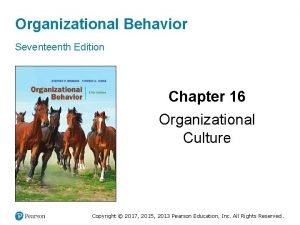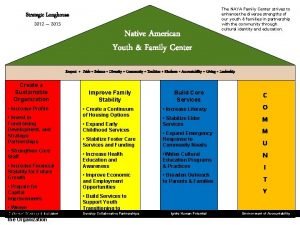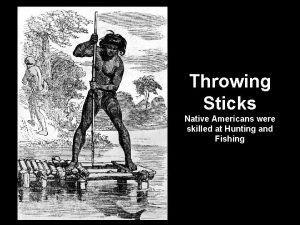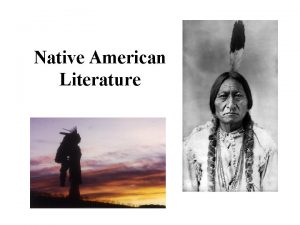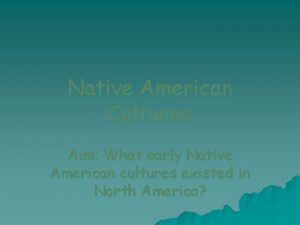Native American Literature Native American cultures and their






- Slides: 6

Native American Literature

• Native American cultures and their respective literatures are not ornamental and historical artifacts of America‘s past, but are both ancient and ongoing – and as complicated as those of any other of the world‘s peoples. – Michael Dorris

Native American Lit – Pre-Renaissance • Oral traditions: creation stories, trickster and hero stories, chants, ceremonies, rituals • Oral tradition foundation of contemporary written lit. • Written Literature – autobiographies in the 18 th century: Mohegan minister Samson Occum published his sermons in 1772 • Other autobiographical and protest writing calling for better treatment of Indians. • William Apes (Pequot) “An Indian’s Looking Glass for the White Man”

• The Life of Black Hawk (1833) by Black Hawk • is Life Among the Piutes: Their Wrongs and Claims (1882) by Sarah Winnemucca • John Rollin Ridge (Cherokee) The Life and Adventures of Joaquin Murieta (1854) – considered as the first Native American novel. • S. Alice Callahan (Creek) Wynema: A Child of the Forest (1891) • Hum-Ishu-Ma Mourning Dove (Okanogan) Cogewea the Half-Blood • D‘Arcy Mc. Nickle (Cree/Flathead) The Surrounded (1936) model for writing of the NA renaissance.

Themes of Early Native American Writing • Losing cultural identity and consequences of assimilation • Sense of being caught between traditional ways and modern, mainstream American society • Protest against racism and stereotypes • Awareness of the loss of ancestral homelands • Using stories to shape individual and collective identity. • Survival and continuance by adapting oral traditions and old customs to deal with new circumstances.

